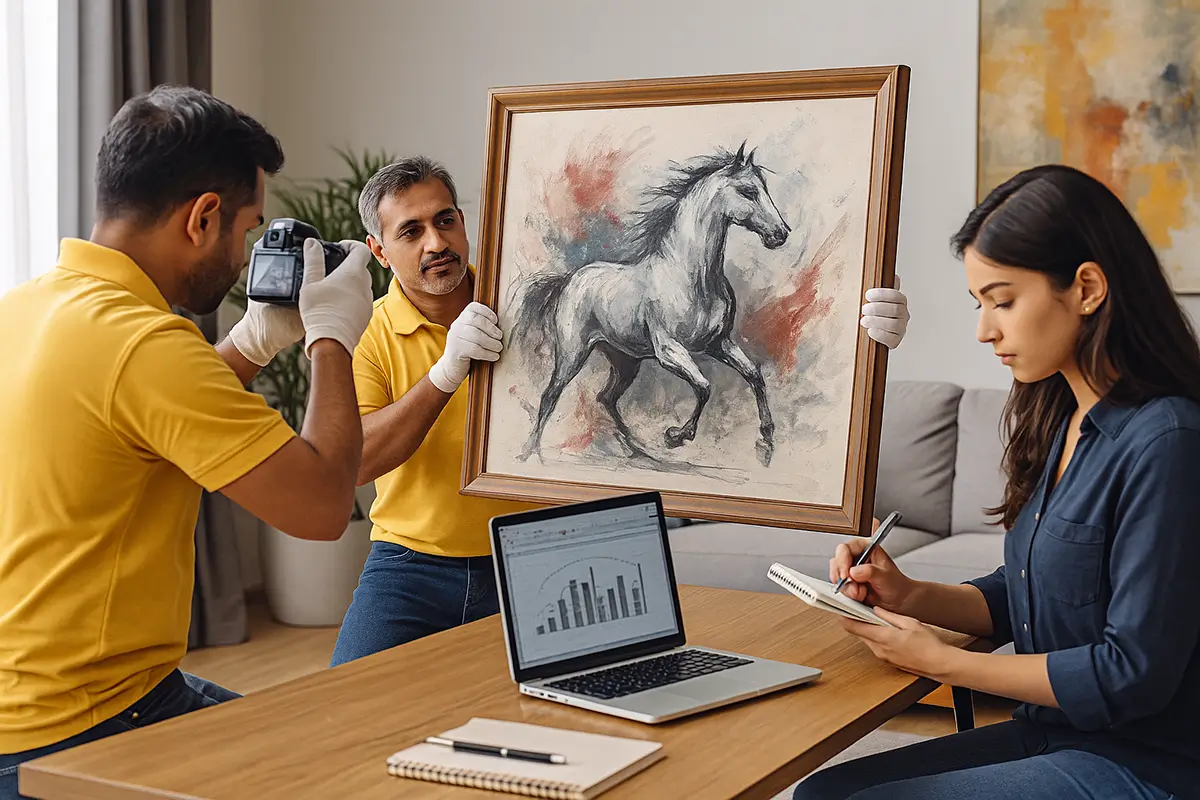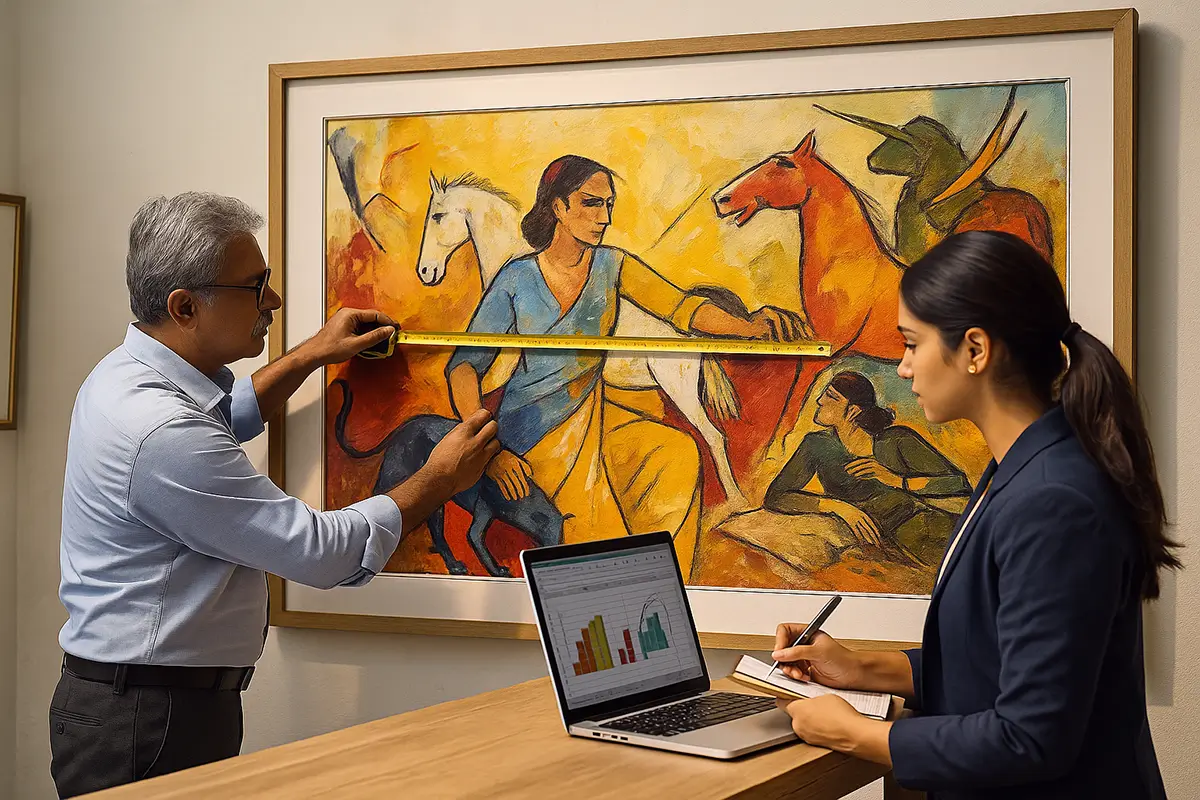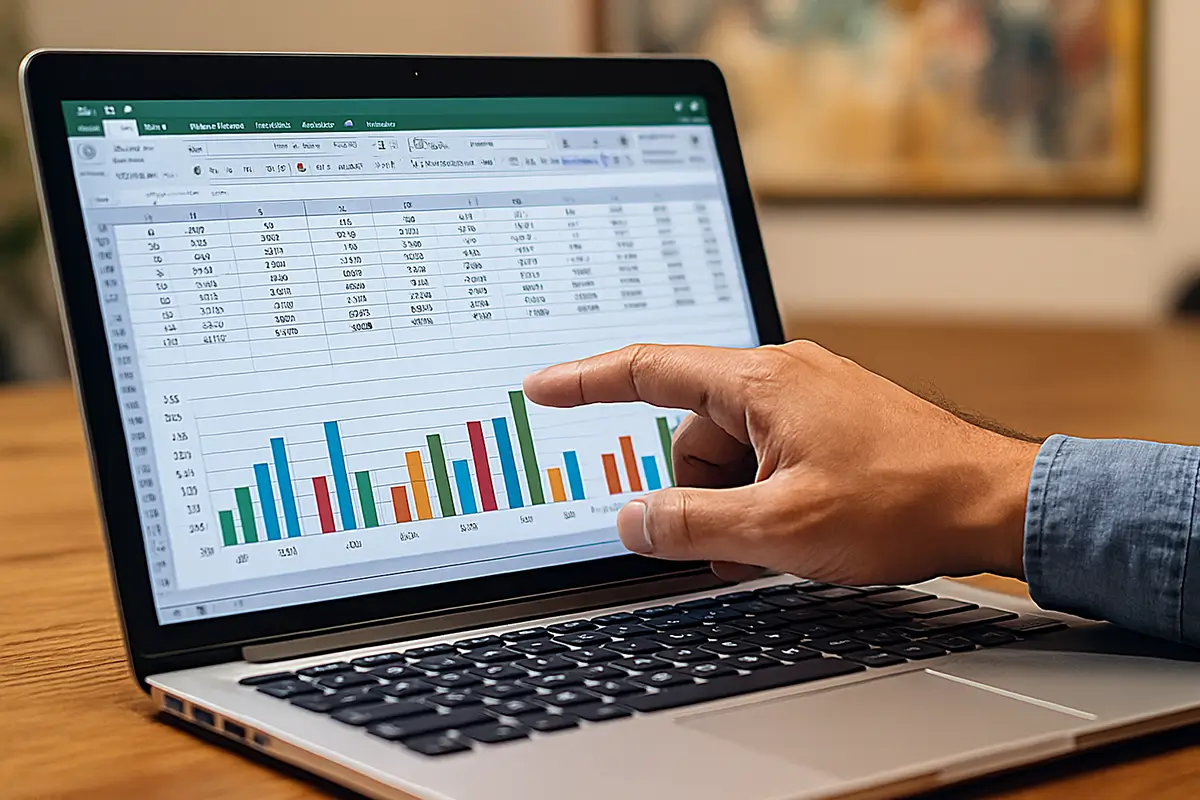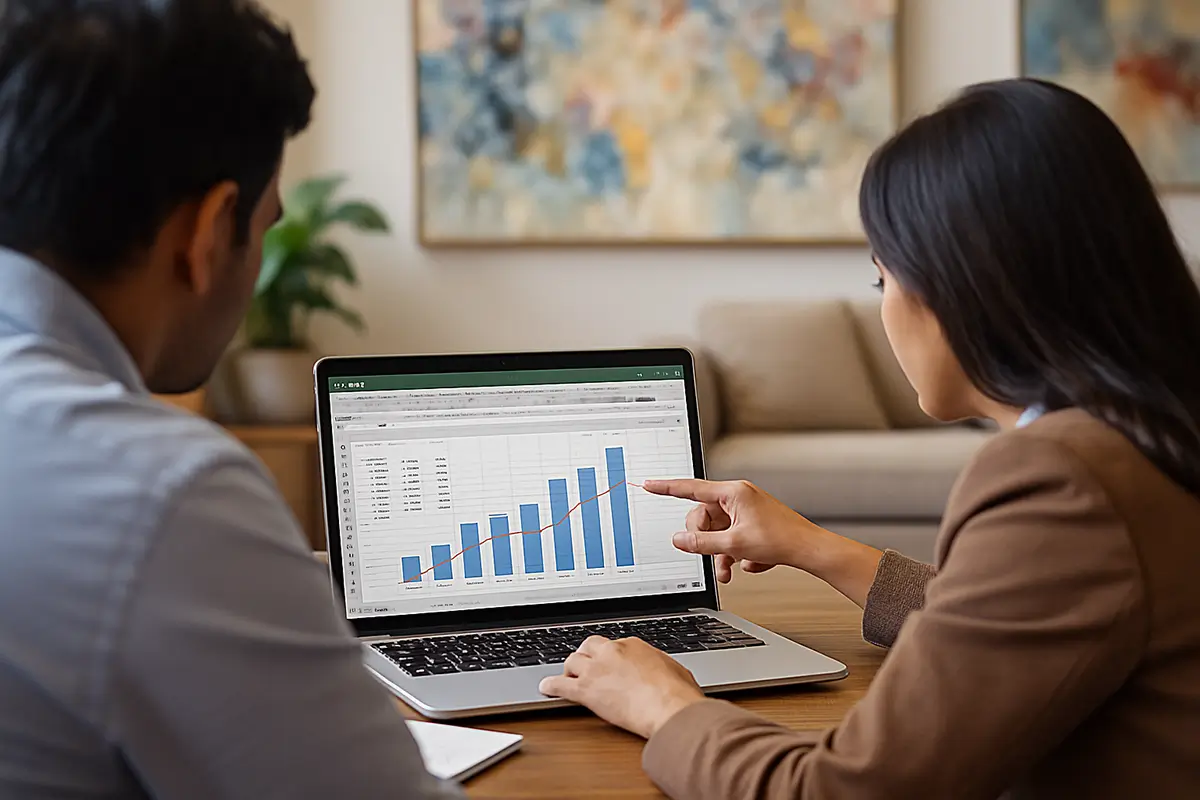Introduction: Why valuation matters now
Art in India has moved well beyond passion purchases and décor. It’s a cultural asset, a balance-sheet item, and—when managed correctly—a long-term store of value. Whether you’re a private collector in Mumbai, a family office in Delhi, or a corporate with a pan-India presence, knowing how to value Indian paintings and artefacts is essential. A credible valuation underpins insurance, lending, estate planning, philanthropy, and informed buying or selling.
Yet, valuation isn’t guesswork or a quick scroll through asking prices online. It’s a structured process that weighs evidence: artist reputation, provenance, condition, market comparables, and legal context—especially important for artefacts and antiquities subject to Indian regulations. This practical guide breaks down the key criteria, the step-by-step approach, current market insights (2025), and common pitfalls so you can make decisions with confidence—and documentation.
What “value” actually means (and why there’s more than one)
Before you begin, be clear on the type of value you need. Each use case can require a different number and methodology:
- Fair Market Value (FMV): The price a willing buyer and willing seller would agree upon in an open market, with neither under compulsion. Typically used for estates, transfers, and some tax-related contexts.
- Market Value (Transactional): The likely price in the current marketplace (auctions, galleries, private sales) after considering comparable sales.
- Replacement Value (Insurance): What it would cost to replace the work with a similar one at current retail. This is often higher than FMV and is standard for insurance scheduling.
- Liquidation Value: A quick-sale value under constrained timelines—useful for distress scenarios or certain lending situations.
- Indemnity/Declared Value for Transit: The amount declared to cover risk during transport and temporary storage.
Pick the wrong value type and you risk over-insuring, under-selling, or reporting an inaccurate balance-sheet figure. A professional appraisal will specify the valuation approach and intended use.
The key criteria that drive value
1) Artist reputation & career trajectory
- Blue-chip modern masters vs rising contemporary names: Established records, institutional shows, and critical reception reduce uncertainty and typically command premiums.
- Career momentum: Recent retrospectives, biennale participation, strong gallery representation, and museum acquisitions influence demand and pricing.
2) Authenticity & documentation
- Provenance (ownership history), certificates, and expert opinions are foundational.
- Documentation gaps increase risk and depress value—even for objectively strong works.
3) Condition & conservation history
- Stability of the surface, presence of craquelure, overpainting, tears, fungus, or discoloration matter.
- Transparent conservation history (done professionally, reversible materials) is acceptable; undisclosed amateur “repairs” reduce value.
4) Rarity, period & subject
- Period: A sought-after phase or series in an artist’s career can carry a premium.
- Subject: Iconic themes or compositions collectors chase (e.g., signature motifs) tend to outperform.
- Rarity & scale: Unique or scarce formats, and compelling sizes (often mid-to-large for walls), can attract more bidders.
5) Medium & materials
- Oil on canvas vs acrylic vs works on paper; bronze vs mixed media; archival quality. Certain media typically command higher prices—but quality within the medium matters most.
6) Exhibition & publication history
- Inclusion in museum shows, biennales, or well-regarded catalogs/publications strengthens cultural significance and market confidence.
7) Comparables (recent sales data)
- Auction results and verified private sales for similar works (same artist, similar period, medium, size, and subject) provide anchor points.
- Adjust comparables for condition, scale, date, and market momentum.
8) Market liquidity & demand cycles
- Depth of demand (number of active buyers) matters. Some artists have stable, liquid markets; others are thinly traded and volatile.
9) Legal & ethical context (especially artefacts)
- Compliance with Indian law for antiquities and cultural property is non-negotiable. Works with unclear origin or export history carry steep discounts—or are unmarketable.
A step-by-step valuation process for collectors in India
Step 1: Assemble documentation
Gather everything: invoices, gallery letters, emails, certificates of authenticity, exhibition invites, catalog essays, condition reports, and high-resolution images (front/reverse). If documentation is thin, prioritise building it now (cataloging and provenance checks).
Step 2: Establish authenticity
Where applicable, seek expert opinions (artist estates, foundations, recognised scholars) and verify signatures, stamps, and inscriptions. Don’t rely on hearsay or a single unverified “certificate.”
Step 3: Assess condition (professionally)
Commission a formal condition report. Subtle conservation risks—fungus, instability, prior overpaint—can materially affect value and insurability. A good report underpins both the valuation and any future claim.
Step 4: Identify comparables
Work with an appraiser to build a comparables set: recent auction results and vetted private sales for similar works. Compare like-for-like: artist, period, medium, size, subject, quality. Note outliers and thinly traded markets.
Step 5: Adjust for differences
Apply adjustments for scale (per square inch/centimetre analysis can help), subject desirability, condition, exhibition history, and current market sentiment. This is where expertise matters.
Step 6: Select valuation basis
Agree the appropriate basis (FMV vs replacement value). Insurance requires replacement value, while estate planning might use FMV.
Step 7: Issue a formal report
A professional valuation should state: purpose, value type, methodology, assumptions, limitations, comparables reviewed, and the final concluded value (with date). Keep this on file and sync with cataloging records.
Step 8: Revisit & update
Revalue every 18–36 months or at material events: major exhibition, conservation, market shift, or insurance renewal. Markets evolve—and so should your numbers.
Market insights (2025): What’s shaping value in India now
While specific price calls belong in a bespoke appraisal, several broad currents continue to shape value in India:
- Institutional validation: Museum shows, biennales, and curated retrospectives meaningfully move the needle—especially for mid-career to established artists.
- Online sales maturity: Digital viewing rooms and online auctions have widened buyer pools (including the Indian diaspora), improving liquidity for certain segments.
- Depth in Modern + Contemporary: Modern masters remain anchors for many collections, while top-tier contemporary artists with strong gallery and institutional support show resilient demand.
- Category diversification: Works on paper, prints/editions, photography, and sculpture see steady institutional interest when supported by scholarship and quality.
- Provenance premium: In a market cautious about authenticity, well-documented works consistently outperform.
- Corporate collecting & curated workplaces: Professionalised corporate programs are reinforcing demand for museum-quality, well-documented pieces with strong display value.
Practical takeaway: Your best drivers of value in 2025 are still quality, documentation, and credible market evidence—anchored by condition and authenticity.
Valuing artefacts & antiquities: special considerations
Valuation of artefacts and antiquities (sculptures, ritual objects, archaeological material) involves additional layers:
- Legal status: Ensure compliance with Indian law before any market activity. Works that cannot be legally sold or exported have constrained liquidity and value.
- Provenance depth: Expect higher scrutiny—ownership chain, old photos, scholarly references, and find-spot details (when legally documented).
- Condition & restoration: Conservative, reversible treatments with documentation preserve value; undisclosed or invasive “repairs” do not.
- Comparables scarcity: Comparable sales may be fewer; credible appraisers lean on international scholarship, museum benchmarks, and ethical market channels.
- Cultural sensitivity: Ethical stewardship and lawful custody are integral to value—not afterthoughts.
Given these variables, artefacts valuation is a domain where experienced specialists are essential.
Common pitfalls to avoid
- Using asking prices as value: Asking prices aren’t sales. Verify with realised prices and vetted private transactions.
- Ignoring condition: Two “similar” paintings can diverge by 30–50% if one has stability issues or amateur overpaint.
- Thin comparables: One auction outlier is not a market. Build a basket of comparables and adjust with discipline.
- Paperless provenance: Verbal claims aren’t provenance. If you can’t show it, the market won’t price it.
- One-time valuations: Markets move. Revisit regularly—especially for insurance.
- Confusing value types: Replacement value for insurance vs FMV for a private sale—get the basis right.
Pricing art for insurance (and keeping it current)
For insurance, the relevant basis is usually replacement value—what it would cost to replace with a comparable work at today’s retail or primary-market price. Practical tips:
- Start with a professional valuation that clearly states “replacement value.”
- Sync with condition reports and full documentation; underwriters reward clarity.
- Revalue on renewal or every 18–24 months in active markets.
- Cover transit & temporary locations (exhibitions, loans).
- Match deductibles and sub-limits to the reality of your collection (e.g., single high-value pieces).
Properly structured insurance starts with properly structured valuations.
When to bring in professional
Art Valuation Services
Consider a formal appraisal when you’re:
- Buying or selling (to avoid overpaying/underselling)
- Insuring or renewing insurance (need replacement values)
- Securing loans with art as collateral
- Planning estates, gifts, or donations
- Preparing financial statements or audits
- Updating records post-conservation or major exhibitions
What you should expect from a professional:
- Transparent scope and valuation basis (FMV, replacement, etc.)
- Comparable sales analysis with rationale for adjustments
- Integration with your cataloging (metadata, provenance) and condition reports
- A dated, signed report you can rely on with insurers, auditors, and counterparties
For a compliant, defensible appraisal tailored to your use case, explore our Art Valuation Services—we combine market analysis with rigorous documentation so your numbers stand up to scrutiny.
Quick “Valuation Prep Kit” (checklist you can use today)
- Documentation folder: invoices, emails, certificates, catalog essays, press clippings
- Images: high-res front, reverse, details; installation shots for scale
- Condition report: most recent, plus conservation history
- Provenance timeline: owners/dealers with dates and evidence
- Exhibition/publication list: with catalogs or links where possible
- Market folder: any relevant past auction lots or gallery quotes (as reference, not verdicts)
Organised inputs reduce appraisal time—and your uncertainty.
Case snapshots: how the criteria play out
- Modern master, signature subject, excellent condition:
Strong provenance + museum-level publications + recent institutional show = robust demand and pricing. Comparable sales anchor the range; replacement value for insurance sits higher than FMV. - Contemporary mid-career work, iconic series but minor condition issue:
Thin overpaint or edge restoration, fully disclosed and professionally done, may mean a modest deduction vs perfect condition; strong gallery support and recent museum inclusion may offset. - Textile or paper work, light sensitivity concerns:
If condition is stable and documentation is strong, value is supported; replacement values should factor framing upgrades (UV glazing) for insurance. - Artefact with incomplete provenance:
Even with aesthetic merit, legal/ethical uncertainty depresses value and marketability. Invest first in provenance research before attempting to sell or insure.
Bringing it all together: evidence over opinion
Valuation rewards discipline. Build a record, compare intelligently, adjust transparently, and document conclusions. A number without a method is just a guess; a number with method + evidence is an asset.
If you’re serious about protecting (or realising) the value of your collection—whether a single blue-chip painting or a diverse corporate portfolio—the next step is simple: formalise the process with a professional appraisal, keep your documentation tight, and re-engage as markets evolve.
Start by speaking with our team about Art Valuation Services. We align the right valuation basis to your purpose, integrate condition and provenance documentation, and deliver reports that insurers, auditors, and counterparties respect.













